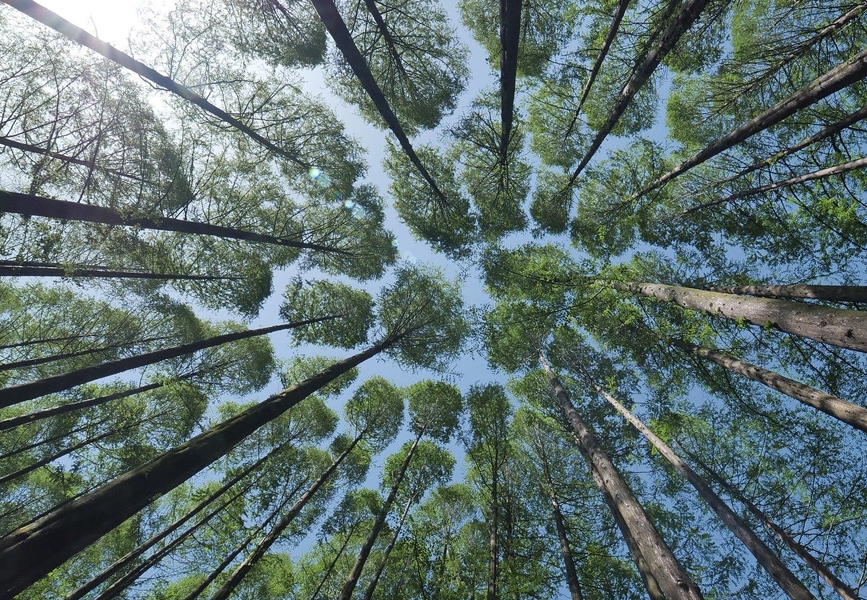Olly Hughes, Managing Director of our Forestry division, looks deeper into forestry investment and the environmental awakening of the investor community - February 2020
Olly Hughes, Managing Director of our Forestry division, looks deeper into forestry investment and the environmental awakening of the investor community - February 2020
In the current low-yield environment, investors are increasingly looking to alternative asset classes in order to try to enhance returns.
Commodities, such as oil and metals, have historically been one area some investors have eyed in a bid to achieve higher returns. However, these assets have clearly lost their appeal as the investor environmental awakening continues.
So, should investors simply avoid the natural resources space? This would be a mistake, in our view, as investors would miss out on one of the market’s most compelling under-the-radar investment areas – forestry.
Largely unfamiliar to most investors, forestry assets continue to deliver outsized returns compared to traditional natural resources – while positively contributing to global decarbonisation.

Exceptional return profile
The average long-term returns from forestry assets are higher than almost all asset classes. UK forestry investments have delivered 9.2% annualised returns over a 25-year period, according to the independent IPD Index.
Meanwhile, the levels of volatility associated with forestry investments approach those of investment grade bonds. This is due to the flexibility of the harvesting window for trees, which spans 15 years.
The revenue from trees can be strategically timed to coincide with the highest prices for timber, as well as to ensure consistency of returns compared to other commodities, such as oil, which operate in boom/bust cycles.
Value grows on the stump
Annual returns from forestry assets are underpinned by the biological growth of trees, at approximately 2-3%% per annum across a 40-year rotation. Further to this natural growth, returns are driven by a wide disconnect between the demand and supply of wood products.
Demand is rapidly increasing in the context of urbanisation, a housing shortage across all major economies and the global decarbonisation imperative. Meanwhile, global timber production has only grown at 1.5% per annum over the past 50 years.
This supply and demand dynamic indicates the potential for significant timber price rises in the coming years.

Softwood timber is a fundamental constituent of a number of essential industries. Historically, only the logs of the trees were used for construction and to produce solid wood products. Now, the entirety of the tree can be employed, increasing the return from every single tree.
Pulpwood, comprising wood chips, bark and sawdust, is used for paper and pulp making and is responsible for 10% of softwood timber use. Logging residue and fuel wood, which contain tall oil, black liquor and bark, can be transformed into bioenergy, in the form of liquid biofuels, wood pellets and direct electricity or heat. This makes up 15% of softwood use.
The world’s sustainable commodity
Forestry assets also play a key role in addressing the major sustainability challenge facing investors today. Investing in forests directly contributes to UN Sustainable Development Goal 15: ‘Protect, restore and promote sustainable use of terrestrial ecosystems, sustainably manage forests, combat desertification, and halt and reverse land degradation and halt biodiversity loss’. All Gresham House’s forests are independently certified as 100% sustainable, prior to harvesting commencing.
Forests help decarbonise the atmosphere, by storing carbon dioxide in the trunk, branches, leaves and roots of trees. This is crucial for the environment, as global levels of CO2 rise to unsustainable levels.
Wood is also a key sustainable product in replacing environmentally damaging raw materials such as concrete, steel and fossil fuels.

To-date, government funding has led efforts to protect forests and biodiversity. However, investors also have a huge role to play in the climate crisis. Carbon credits, which are awarded for the afforestation of commercial forestry, are incentivising companies to invest in forestry to offset their carbon emissions.
Nevertheless, the opportunity to positively contribute to the environment alongside the potential for receiving outsized returns remains vastly underappreciated by individual investors.
Read more about investing in Forestry with Gresham House >>
This article is representative of the experiences and opinions of the author and does not constitute investment advice.
 |
About the authorOlly Hughes |
 Gresham House
Specialist asset management
Gresham House
Specialist asset management






